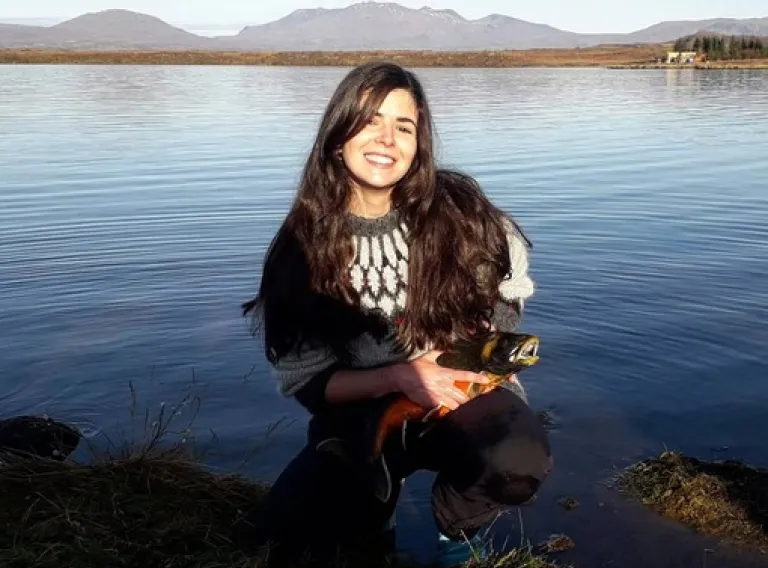Aðalbygging
The Aula
Doctoral candidate:
Marina de la Cámara
Title of thesis:
The genomic basis of adaptive differentiation between closely related morphs of Arctic charr
Opponents:
Dr. Nicola Barson, Researcher at the Centre for Integrative Genetics (CIGENE), Norwegian University of Life Sciences, Norway
Dr. Hákon Jónsson, Researcher at deCODE Genetics, Iceland
Supervisory teacher:
Dr. Arnar Pálsson, Professor at the Faculty of Life and Environmental Sciences, University of Iceland
Advisor:
Dr. Kalina H Kapralova, Research Specialist at the Institute of Experimental Pathology at Keldur, University of Iceland
Other members of the doctoral committee:
Dr. Zophonías O Jónsson, Professor at the Faculty of Life and Environmental Sciences, University of Iceland
Dr. Moira M Ferguson, Professor Emeritus at the College of Biological Science, University of Guelph, Canada
Dr. Michael B Morrisey, Reader at the School of Biology, University of St Andrews, Scotland
Chair of Ceremony:
Dr. Gunnar Þór Jóhannesson, Professor and acting Head of the Faculty of Life and Environmental Sciences, University of Iceland
Abstract:
Exploring the genetic basis of ecological diversification is crucial to understand how diversity is generated and maintained. The overall aim of this thesis is to disentangle the genetic underpinnings behind the ecological differentiation of the Arctic charr in lake Thingvallavatn (Iceland), where this species has diverged genetically and phenotypically into four morphs along the benthic-limnetic ecological axis. Here I focused on studying the genetic component of (1) the morphology associated with benthic and limnetic ecologies and (2) body size differentiation. To tackle this, a variety of methodological approaches was used: 1) geometric morphometrics analyses were conducted to characterise morphological differentiation across morphs, 2) QTL mapping was used to map those traits onto the genome, and 3) population genomic approaches were implemented to look at the genetic underpinnings and evolutionary processes that may influence the body size differentiation observed in the system. Throughout this thesis I provide evidence for a genetic basis behind body shape and size in the Arctic charr system from Thingvallavatn. QTL mapping revealed that the relative size of the head, maxilla shape and peduncle depth were attributed to single QTL with moderate to high effects, likely complemented with other QTL of small effects. Additionally, genome scans unveiled highly differentiated genomic regions shared between the small and large morph pairs, including a region containing the glypican- 6 gene, which is highly conserved in vertebrate evolution and plays a role in cell proliferation and growth. This work significantly contributes to our understanding of ecological diversification and opens avenues for further research in salmonid and other freshwater systems.
About the doctoral candidate:
Marina was born in Madrid, Spain in 1994. She studied Biology at the Complutense University of Madrid and completed a master’s program in Ecology and Evolution at the University of Oslo (Norway). When not immersed in science, Marina is passionate about music, aerial arts and rock climbing, hobbies that keep her balanced and inspired.

Share
Buses 14, 1, 6, 3 and 12 stop at the University of Iceland in Vatnsmýri. Buses 11 and 15 also stop nearby. Let's travel in an ecological way!
